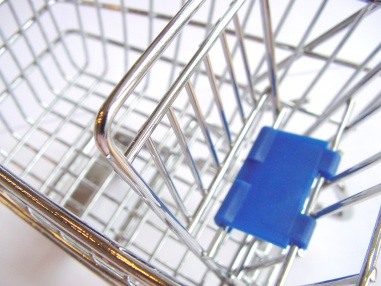Visual Pattern Recognition: An Automatic Identification Technology
 Visual Pattern Recognition, a new evolution in automatic identification, is being used from grocery stores to war zones.
Visual Pattern Recognition, a new evolution in automatic identification, is being used from grocery stores to war zones.
Picture if you can an armored vehicle rolling down an alley in a war zone. The soldiers inside have been on patrol for many hours and are feeling the fatigue. Their senses aren't as sharp as they should be. Their eyes are tired and not moving as quickly as usual.
But when the driver's eyes pick up a sniper on a nearby rooftop, there's no panic by the crew. That's because the technology in the vehicle revealed the threat several seconds before, giving the soldiers the opportunity to take evasive action. That's visual pattern recognition in action. And that's why that same armored vehicle rolls safely back into camp at the end of the patrol.
Now see yourself in a crowded grocery store, pushing a cart full of goodies for the big party on Saturday. The basket is chock full of food and drinks and you've got the bottom of the cart jammed with cases of beer and soda. You unload the basket onto the conveyer belt and start thinking about pulling out those heavy drink cartons.
As your cart rolls past the checkstand, a camera - using the same visual pattern recognition technology that kept the soldiers out of trouble - recognizes the items in the bottom of your basket. You don't have to do anything as the items come up on the touch screen and the checker confirms your purchases. The bagger places the rest of your food back in the cart and you head back out to the parking lot, ready for the big event.
In both these scenarios, visual pattern recognition technology was used to solve a problem. Engineers and computer programmers trained a software  program to see and match physical features in the real world to known controls. These features could be someone's face, a weapon, or the pattern on a carton of Diet Coke or Budweiser.
program to see and match physical features in the real world to known controls. These features could be someone's face, a weapon, or the pattern on a carton of Diet Coke or Budweiser.
And the end result was success. Because of visual pattern recognition technology, the soldiers got back to base safely and the grocery store manager received payment for each item the customer removed from the store.
So what does visual pattern recognition technology have to do with automatic identification? At this point, the camera watching the bottom-of-the-basket rolling through the checkout lane cannot do all of the work for the checker. The camera recognizes the product, matches it with the appropriate UPC, and sends the information to the point of sale system. And paired with a bar code scanner, the system has all the information needed to charge the customer for the products carried out of the store.
Grocery industry analysts estimate that bottom-of-the-basket losses at the market can eat up 5 to 10 percent of net profits. And an experienced and effective checker will scan 97-98% of all items coming through the lane. What if the addition of the camera could provide another one or two percent increase?
Companies like Evolution Robotics are developing products today based on visual pattern recognition technologies that make this scenario a reality. Products that combat fraud and organized retail crime, and even help store managers check that the inventory on their shelves is exactly what it should be. Working in conjunction with other mature auto ID technologies, visual pattern recognition advances are showing that what seemed to be insoluble problems can be overcome.
See related articles below:
AIM Expo 2011 Offers Educational Opportunities for the Auto ID Industry
Why Scan Barcodes When You Can Scan a Playmate?
YouTube Video's that illustrate how to make labels and bar codes:
1. Create a QR Code for business cards
2. QR Code for Signs and Flyers
4. Make sheets of bar code labels
{jcomments on}
